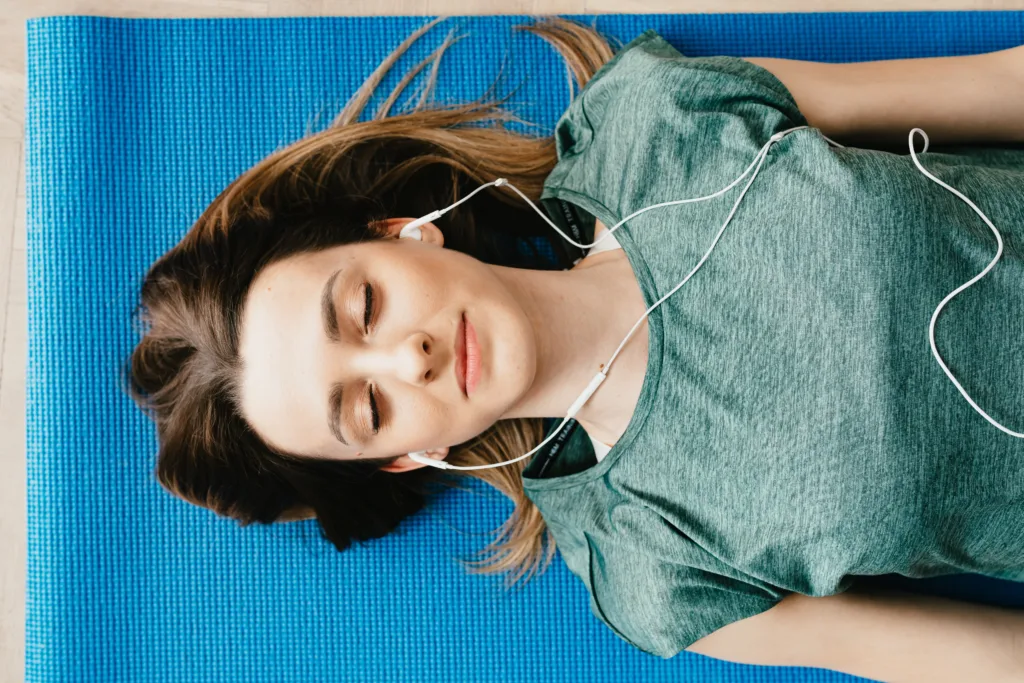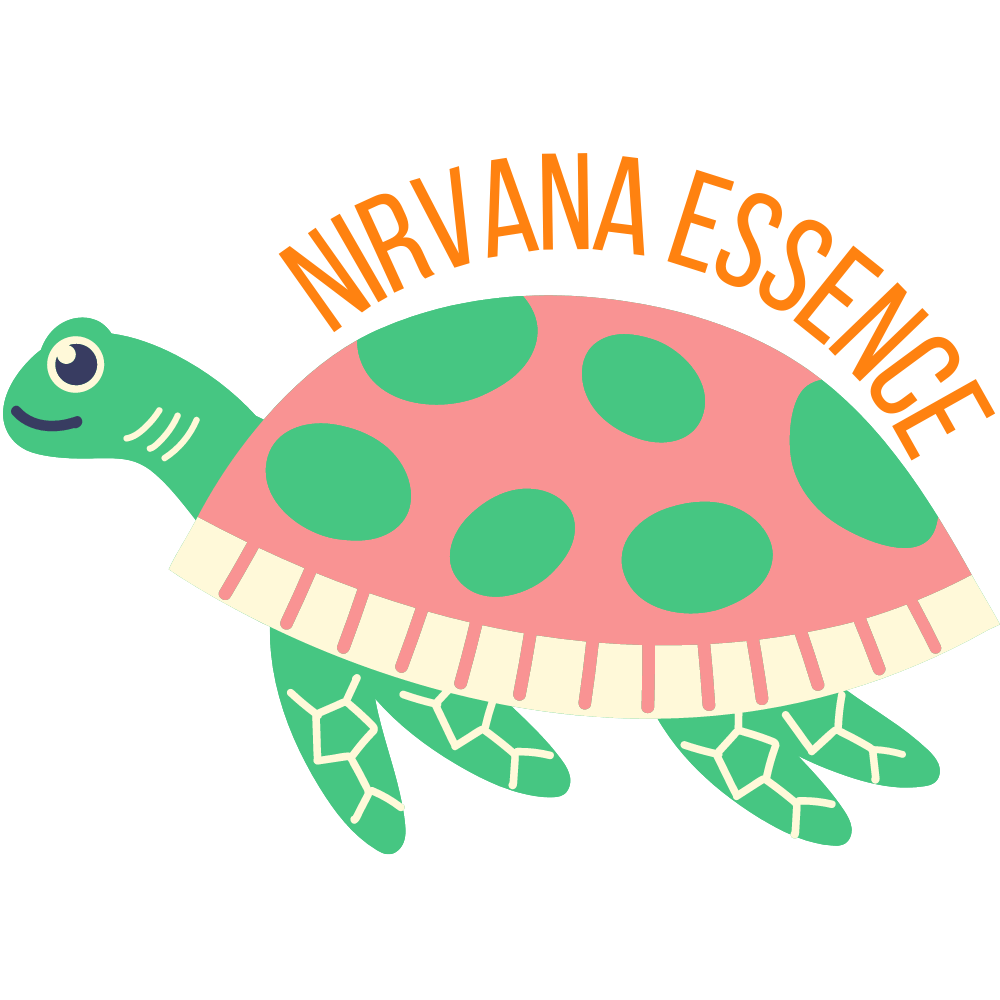Introduction to Yoga Asanas for Beginners
Welcome to the world of yoga, a practice that goes beyond the physical postures and breath control; it’s a journey of self-discovery and inner peace. As a beginner, you might feel overwhelmed by the number of poses and their odd-sounding names. But it’s a good idea to keep things simple when you’re just starting. This guide will introduce you to the basic yoga poses, or asanas, that every yoga practitioner should know.
Understanding the Basics of Yoga Practice
What is a Yoga Pose?
A yoga pose, or asana, is a specific position that you hold during your yoga practice. These poses range from simple ones like the Mountain Pose to advanced postures that require more flexibility and strength. The practice of yoga involves moving from one pose to another, often in sync with your breath, inhaling and exhaling as you transition between poses.
The Role of Asanas in Yoga
Asanas are the physical component of yoga. They help to strengthen the body, improve flexibility, and promote balance. But yoga is not just about the physical. Asanas also help to calm the mind, reduce stress, and bring a sense of peace and tranquility.
Starting Your Yoga Journey as a Beginner
As a beginner, it’s important to start with basic yoga poses. These poses form the foundation of any yoga practice and will help you to build strength and flexibility as you progress. It’s also important to remember that yoga is not a competition. It’s a personal journey, and it’s okay to modify poses or use props like blocks or straps to make the pose more accessible.
8 Basic Yoga Asanas for Beginners
Mountain Pose
The Mountain Pose, or Tadasana, is a basic standing pose and is often the starting position for other standing poses. It’s a great pose for beginners as it helps to improve posture, balance, and body awareness.
To perform the Mountain Pose, stand tall with your feet hip-width apart. Spread your fingers wide and let your arms hang naturally by your sides. Inhale deeply, lengthen through the crown of your head, and reach your fingertips towards the floor. Exhale and feel your feet grounding into the earth. Hold this pose for 5-10 breaths.

Downward-Facing Dog
Downward-Facing Dog, or Adho Mukha Svanasana, is a pose that you’ll find in almost every yoga class. It’s a great pose for stretching the entire body and is often used as a resting pose during vinyasa yoga sequences.
To perform Downward-Facing Dog, start on your hands and knees. Place your hands slightly ahead of your shoulders and spread your fingers wide. Tuck your toes under and, as you exhale, lift your knees off the floor, pushing your hips up towards the ceiling. Try to straighten your legs and push your heels down toward the floor. Keep your head between your arms and look towards your feet. Hold this pose for 5-10 breaths.

Plank Pose
The Plank Pose is a powerful strength-building pose that works the whole body. It’s a great pose for beginners to build core strength and stability.
To perform the Plank Pose, start in Downward-Facing Dog. As you inhale, shift your weight forward until your shoulders are over your wrists and your body forms a straight line from your head to your heels. Keep your core engaged and hold this pose for a few breaths.

Triangle Pose
The Triangle Pose, or Trikonasana, is a standing pose that stretches the legs and spine, improves balance, and helps to open the chest and shoulders.
To perform the Triangle Pose, stand in Mountain Pose and step your feet about 3 feet apart. Turn your right foot out 90 degrees and your left foot in slightly. Extend your arms out to the sides and, as you exhale, reach your right hand towards the floor, bending at the hip. Keep your left hand reaching towards the ceiling. Turn your gaze up towards your left hand and hold this pose for a few breaths. Repeat on the other side.

Bridge Pose
The Bridge Pose, or Setu Bandha Sarvangasana, is a back-bending pose that helps to stretch the chest and spine, while also strengthening the legs and improving core stability.
To perform the Bridge Pose, lie flat on the floor with your knees bent and feet hip-width apart. Place your arms along your sides with your palms facing down. As you inhale, lift your hips off the floor, pressing your feet and arms into the ground. Keep your thighs parallel to the floor and your knees directly over your ankles. Hold this pose for a few breaths, then slowly lower your hips back to the floor as you exhale.

Tree Pose
The Tree Pose, or Vrksasana, is a standing balance pose that helps to improve posture, balance, and body awareness.
To perform the Tree Pose, stand in Mountain Pose. Bend your right knee, lift your right foot off the floor, and place the sole of your right foot on your left inner thigh. Keep your hips facing forward and balance on your left foot. Bring your hands together in front of your chest in a prayer position, or reach them up towards the ceiling. Hold this pose for a few breaths, then repeat on the other side.

Savasana
Savasana, or Corpse Pose, is a resting pose that is usually performed at the end of a yoga practice. It’s a chance to relax and integrate the benefits of your practice.
To perform Savasana, lie flat on the floor with your legs extended and arms at your sides, palms facing up. Close your eyes and take slow, deep breaths. Try to relax your body and calm your mind. Stay in this pose for 5-10 minutes.

Bandha
Bandha, or lock, is a term used in yoga to describe the contraction or closure of a part of the body. The purpose of bandha is to control the flow of energy in the body and to enhance the practice of the asanas.
One common bandha is the Mula Bandha, or root lock. To perform Mula Bandha, sit comfortably on your yoga mat and take a few deep breaths. As you exhale, contract the muscles at the base of your pelvis. Hold this contraction for a few seconds, then release as you inhale. Repeat this a few times.
How to Incorporate these Asanas into Your Yoga Class
Now that you’re familiar with these basic yoga poses, you can start to incorporate them into your yoga practice. Start with a few poses and gradually add more as you become more comfortable. Remember, it’s not about how many poses you can do, but about how you feel while doing them. Listen to your body and move at your own pace.
Remember to always warm up before starting your practice and cool down afterwards. And don’t forget to breathe! Inhale and exhale deeply and steadily throughout your practice. This will help to calm the mind and enhance the physical benefits of the asanas.
Modifications and Variations for Basic Yoga Poses
Every yoga practitioner is unique, and what works for one person may not work for another. That’s why it’s important to learn how to modify and vary your poses to suit your individual needs and abilities. Here are some suggestions:
Mountain Pose
If you find it difficult to balance in Mountain Pose, try standing with your back against a wall. You can also spread your toes wide to create a larger base of support.
Downward-Facing Dog
If you have tight hamstrings or your hands don’t reach the floor in Downward-Facing Dog, try bending your knees or placing your hands on blocks.
Plank Pose
If you find Plank Pose challenging, try lowering your knees to the floor. This will make the pose more accessible while still strengthening your core.
Triangle Pose
If you can’t reach the floor in Triangle Pose, try placing your hand on your shin or a block.
Bridge Pose
If you have low back pain, try placing a block under your sacrum (the large, triangular bone at the base of your spine) in Bridge Pose. This can provide support and alleviate strain on your low back.
Tree Pose
If you find it difficult to balance in Tree Pose, try placing your foot on your calf or the inside of your thigh. You can also use a wall for support.
Savasana
If you find it uncomfortable to lie flat on the floor in Savasana, try placing a bolster or folded blanket under your knees. This can help to relieve tension in your low back.
Bandha
If you find it difficult to engage Mula Bandha, try visualizing the action instead. Visualization can be a powerful tool in yoga practice.
The Benefits of Basic Yoga Poses
Practicing yoga poses can have a profound impact on both your physical and mental health. Here are some of the benefits you can expect to experience:
Physical Benefits
- Improved flexibility: Yoga poses stretch your muscles and increase your range of motion. With regular practice, you’ll become more flexible.
- Increased strength: Yoga poses require you to support the weight of your own body in new ways, including balancing on one leg (Tree Pose) or supporting yourself with your arms (Downward-Facing Dog). This can help to build strength.
- Improved balance: Many yoga poses require you to balance on one leg or support your body with your arms. This can help to improve your balance and stability.
- Improved posture: Yoga poses strengthen and open the muscles of the chest and shoulders, which can help to improve posture.
Mental Benefits
- Stress relief: Yoga practice can be a great way to relieve stress and find calm. The focus on breath and movement can help to quiet the mind and reduce anxiety.
- Improved focus: The practice of holding poses and focusing on your breath can help to improve your focus and concentration.
- Increased body awareness: Yoga poses require you to pay attention to your body and how it feels. This can lead to increased body awareness and a greater sense of self.
Conclusion: From Basic to Advanced
Starting with these basic yoga poses, you can gradually build up to more advanced postures. Remember, the most important thing is to listen to your body and move at your own pace. Yoga is not about being able to do the most advanced poses; it’s about finding balance and peace within yourself.
Whether you’re a beginner just starting out or an experienced yogi looking to deepen your practice, these basic yoga poses offer a solid foundation. So roll out your yoga mat and start exploring the world of yoga asanas. With practice and patience, you’ll soon discover the many benefits that yoga has to offer.
Remember, the journey of yoga is a lifelong one. As you grow and evolve, so will your practice. So keep exploring, keep learning, and most importantly, keep practicing. Namaste.
Here’s a great resource for more information on different types of yoga poses. And this yoga pose library can help you explore more poses and their variations.
FAQs
What are asanas postures?
Asanas are the physical postures practiced in yoga. They are designed to strengthen the body, improve flexibility, and promote balance. Asanas are an integral part of a yoga session and can range from basic poses like Mountain Pose to more advanced postures like the Downward Facing Dog.
What is the most common yoga pose?
The most common yoga pose is probably the Downward Facing Dog. This pose is a staple in many yoga classes and is often used as a transitional pose or a resting pose. It stretches the entire body and helps to calm the mind.
How many types of postures are there in yoga?
There are hundreds of yoga postures, each with its own benefits and challenges. These can be categorized into four main types: standing poses, seated poses, supine poses (lying on the back), and prone poses (lying on the stomach). A typical yoga class includes a variety of these poses.
What is the king of all yoga poses?
The Headstand, or Sirsasana, is often referred to as the king of all yoga poses. This advanced posture requires strength, balance, and focus. However, it’s important to learn this pose under the guidance of a qualified yoga teacher to ensure proper alignment and safety.
Which pose do most yoga classes end with?
Most yoga classes end with Savasana, also known as Corpse Pose. This is a resting pose where you lie flat on the floor, allowing your body and mind to relax and absorb the benefits of your practice.
What is the difference between asana and posture?
Asana is a Sanskrit word that translates to “posture” or “pose” in English. In the context of yoga, asana refers to the physical postures that are practiced. So, essentially, asana and posture mean the same thing in the context of yoga.
What are the 4 categories of asana?
The four categories of asana are standing poses, seated poses, supine poses (lying on the back), and prone poses (lying on the stomach). Each category has its own benefits and can help to deepen your yoga practice.
How many positions are there in yoga asanas?
There are hundreds of positions or poses in yoga asanas. These range from simple poses that are suitable for beginners, to more complex poses that require more strength and flexibility. It’s always a good idea to start with basic poses and gradually progress to more advanced ones as your strength and flexibility improve.





















